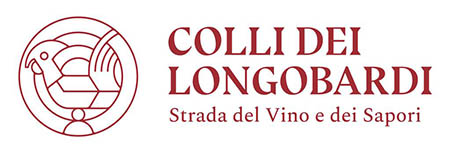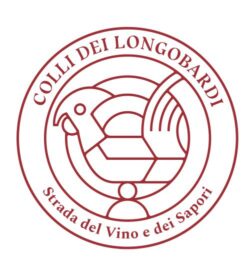Poncarale
Two different built-up areas formed Poncarale, but today there is no continuity between Poncarale and its Borgo (a hamlet). There are actually two parishes, which partly do justice to Borgo and its desire for autonomy towards the centre. If the seat of the municipal offices depended on demography, and not on historical events, we could remind that since under Venetian rule, the so called “hamlet” has always been equal to the centre, if not bigger. In 1580 Borgo had 300 inhabitants, in 1658 it had 425 inhabitants, while Poncarale 350; in 1852 Borgo, with its 650 inhabitants, was bigger than Poncarale and its 482 inhabitants. Nowadays there are 1600 people, both in the two centres. At the beginning of the past century, because of this situation, a separatist movement made itself hard until 1923, with a brawl between the two hamlets. But everything went on as before. In fact, with the Royal charter, Flero and Poncarale became an only commune. There were further riots and protests, hushed up by the carabinieri. In 1956, Flero went back to being an autonomous commune.
If we go through the large area of Poncarale, we find the ancient signs of the past agriculture: in the farmstead of Ferramondine, in the Mazzola and Teatro Barn. Borgo’s countryside is more fertile, and the names of its farms come from the noble families who settled themselves in those lands during the VI and XVI centuries: Berteroni, Finiletto, Malfatto, Bona, Emilia, Nassina and Monfanina. Their presence is due to the feuds, given to the patrician families by the Cathedral chapter, the Bishop’s revenue and the St. Pietro Monastery in Oliveto. The families were: Poncarali, Avogadro, Bornati, Mazzola, Moro, Calini, Emili, Gallo and Nassini.
“The properties are mediocre and good, and they all belong to the town residents. The farmers have things of no account”: this sentence from the “Catastico” by Giovanni da Lezze (1609-1610) makes us deduce that the 400 inhabitants of Poncarale, 70 families “with no earnings”, had little land and had to work “the lands of the well-deserving families, who succeeded in combining ancestral nobility with love for the country”, as written (with a little reverence) in the Encyclopaedia of Brescia, at the heading “Poncarale”.
The symbol of this “love for the country” is Agostino Gallo (1499-1570). He was born in Cadignano in a well-off family and devoted himself to studies, in Verolanuova and in Quinzano. When he came to Brescia he used to frequent Giacomo Chizzola, Averoldi and Luzzago. In 1520, he met St. Angela Merici and in 1532, thanks to his friendship with Girolamo Emiliani, he set up an orphanage and reliefs works. Although his devotion to charity, he could manage his business: in 1530 he had sold 418.500 square yards in Cadignano to buy 370.000 square yards in Malpaga di Calvisano. In 1531, he settled in the city, in St. Clemente alley, near to his friend and painter Alessandro Bonvicino, known as Moretto. When the painter died, Agostino became testamentary executor and responsible for his friend’s children.
In 1534 he bought in Borgo Poncarale 263.500 square yards, and a house where he and his massaro (the man who worked the land) could live. Gallo studied in depth agronomy, so that he could enrich the experience in his father’s farm, and in the other farms in the lowland. Ancient teachings and hints from other agronomists allowed him to create a showpiece farm, with rotation of crops and increase in production. In 1556, he sold the property and devoted himself entirely to the draft of his literary work, which made him famous: “Ten days of the perfect agriculture and the pleasures of the Villa” (1564). The days became thirteen in 1566, and twenty in 1569. He became famous among the noble landowners, who decided to follow his advices, especially those concerning the pleasures of the Villa. At the same time, another work, “Memory of agriculture” by Tarello, addressed small farmers, but they were too much attached to ancient traditions, and did not follow his advices.
Despite Agostino Gallo and the many landowners’ presence, people in Poncarale had few advantages. Guerrini writes “Civil and economic history never changed; the slow and calm life of a little agricultural centre went on as before”. We can share the idea of slowness, but not that of calmness… The birth and development of the Peasant League and the presence of a Socialist group (since the beginning of the XIX century) show that after many years of submission and obedience, even people who had always been considered less “human”, had a sense of human dignity.
In the Chiaviche Inn, run by the family Moro, the “Peace of Bagnolo” took place, on 4-7 August 1484. At that time there were the captains Earl of Calabria, Lodovico il Moro, R. Sanseverino and R. Gonzaga. To this day, a faded memorial tablet reminds us the event.
If it’s worth remembering other people and events, we have to cite the Girelli sisters, two benefactresses: the village did not forget them. And then the artistic patrimony in Borgo’s parish church: among its paintings there is one painted by St. Rocco del Moretto (1498-1554), an altarpiece by G. Rottini (1797-1858) and one Madonna and child by Lazzarini (1710-1801).
Poncarale shares with Capriano del Colle the Monte Netto rise: On its sides, the nobles used to join in foxhunts and compete in duels with horses. In October, lively companies climbed up the alleys to participate in the traditional festival, where people ate polenta and bird-catching, washed down with the red wines of Monte Netto.
Those red wines have today the Doc-Denominazione di origine controllata (Protected designation of Origin).







